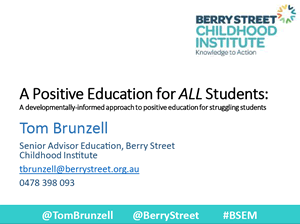Capitalis often defined in financial terms - what you have in the bank or is otherwise available to you. But assets are not just economic. In schools, as in many organisations, there are three clear types of capital. The first is physical capital and this is what you can see and touch. It comprises the buildings, the books and all the equipment and materials needed to deliver a broad and balanced curriculum. The quality of the physical capital of a school is evident when you are shown around and proudly introduced to the gym, the laboratories and the library. The knowledge and skills of the teaching and administrative staff comprises the human capital. You can’t see this directly but you certainly know its there! It is the central focus for appointing new staff. How much do they know and how well can they deliver? You can’t see social capital directly either but it is as important as the other two in the development of a high quality learning environment. The term was first used by John Dewey in the 19th Century acknowledging that first and foremost schools are social environments. He suggested social capital was a valuable resource that would develop when individuals connected to others in meaningful ways. Dewey went on to say that social capital is lost to any society that does not provide the environment and education necessary to bring out the best in any individual. Since then the concept has had numerous re-incarnations, the most influential being offered by David Putnam in Bowling Alone (1995). The reduction in positive interpersonal interaction across the United States has had a negative impact on trust, support, community engagement and democracy. When people bowl alone instead of in groups there is little opportunity for conversation on important issues and in place of interpersonal understanding and acceptance there is mistrust and even fear of others. The polarity of toxic environments and high social capital A simple definition of social capital in schools is the relational quality between all stakeholders. It is what happens between teachers and students, between peer groups in both the classroom and staffroom, in the interactions between executive and staff and communications between the school and the family. When I run workshops on relationships in schools I ask how many participants have experienced a toxic environment. Most experienced teachers know exactly what I am talking about and how it makes people feel. It is illustrated by colleagues bad-mouthing each other, favouritism and cliques, bullying behaviours going unchecked, jumping to negative conclusions about intentions, lack of acknowledgement of effort, domination by the loudest voices and public put-downs. Social capital is, in a nutshell, the opposite of a toxic environment and when workshop participants say they have experienced this they do so with a smile! Where social capital is high the atmosphere is positive as it generates good feelings about the self and others, it promotes motivation and commitment; collaboration flourishes and mutually agreed goals are more likely to be attained. It makes people want to get out of bed on a Monday morning! We know about the importance of connectedness for both resilience and school engagement and social capital is a vehicle for generating a sense of inclusive belonging (Roffey, 2010) So how do you raise social capital in your school? The default position of any organisation may be negative as it takes awareness, energy and action to build social capital. It requires leadership that inspires large groups of people to reflect on their beliefs and values and choose a perspective that promotes healthy relational behaviours. Relationships are sometimes seen as the ‘soft’ side of schools but are in fact the most challenging. Caring school environments are underpinned by a vision that places a positive value on each individual, recognising their strengths and enabling them to become the best they can be. No-one is written off, everyone matters. Academic excellence is valued but not at the expense of everything else. Social capital requires high levels of emotional literacy and this again needs to start with school leaders - those who walk the talk by showing they can stay calm in a crisis, keep a sense of perspective - and a sense of humour - are good listeners and collaborators and explore issues before making judgments and decisions. (Scott, 2003, Roffey, 2007). Being able to admit mistakes gives permission to both teachers and students to do the same - and this opens doors to learning - something Hattie recommends in his meta-analysis of effective education. Social capital gives everyone a voice - facilitating authentic consultation on issues that affect everyone. Conflict is inevitable when people have different perspectives but how this is handled is critical. Both young people and staff in schools need to know how to be appropriately assertive and maintain a respectful approach when faced with challenges. Although you cannot see social capital in the same way that you can see a computer or desk you can quickly tell the difference between a toxic environment and a culture with high social capital. It is there in the expressions on people’s faces, in the way they talk to each other, in the sounds of laughter and the willingness to be flexible. It is not so much in the policy documents but in the acknowledgements, the sharing and the celebration. References Dewey, J. (1900) The School and Society Chicago University Press Putnam, Robert D. (1995). "Bowling Alone: America's Declining Social Capital". Journal of Democracy 6 (1): 65–78 Roffey, S. (2007) Transformation and emotional literacy. The role of school leaders in developing a caring community Leading and Managing 13 16-30 Roffey, S. (2010) Inclusive and exclusive belonging: The impact on individual and community wellbeing. Educational and Child Psychology 30 (1) 38 - 49 Sue Roffey is Adjunct Associate Professor at the University of Western Sydney, Founder of Wellbeing Australia and a Co-Director of Growing Great Schools.


